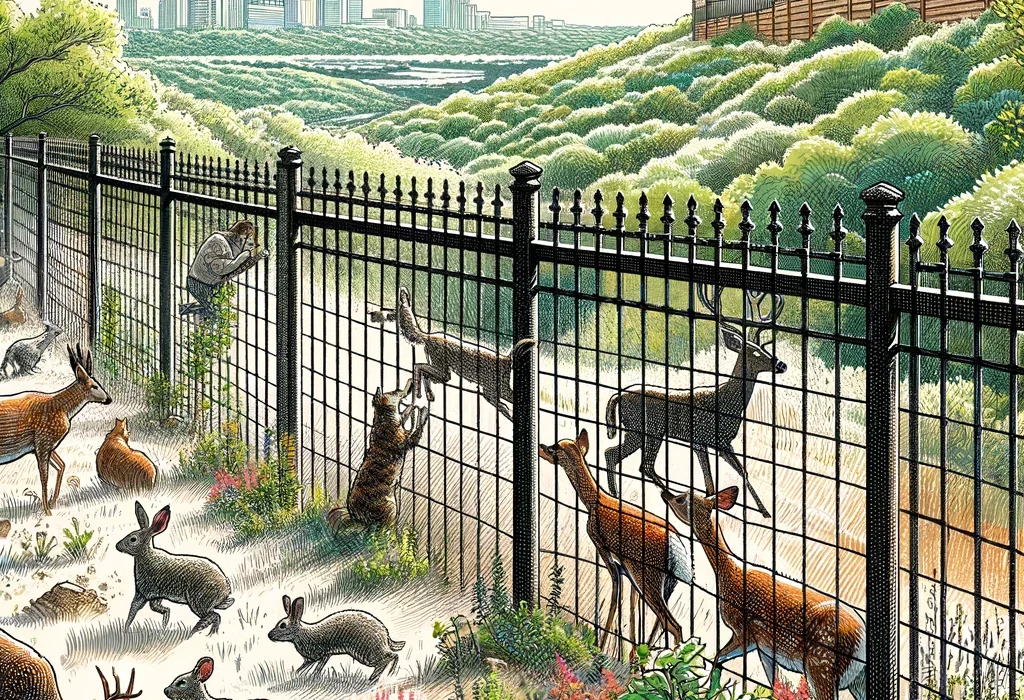Nestled in Texas, Austin is a bustling urban center and a haven for diverse wildlife. As we sculpt our living spaces, it’s imperative to consider the impact of our structures on local fauna. This is particularly true of fencing – a common feature in our landscapes. Thoughtfully designed wildlife-friendly fences can serve their purpose without disrupting local species’ natural movements and habitats.
The Delicate Dance: Fencing and Wildlife
While effectively demarcating boundaries and ensuring privacy, traditional fencing often poses significant barriers to wildlife. It can obstruct migratory paths, limit access to resources, and, in some cases, even cause harm. The challenge, therefore, lies in designing fences that fulfill human needs while preserving the integrity of our rich ecosystems.
Designing with Wildlife in Mind
Wildlife-friendly fencing is about understanding local species’ behaviors and needs. This might mean accommodating small mammals, reptiles, and even larger animals like deer in Austin.
- Material Matters: Smooth wire fences, or wooden fences with smooth edges, can prevent injury to animals that might come into contact with them. Avoiding barbed wire or electric elements in certain areas can be crucial.
- Passages for Passage: Incorporating gaps at appropriate heights or designing specific wildlife passages allows smaller creatures to move through while maintaining fence integrity.
- Height and Visibility: A fence too high might hinder animal movement, while one too low might not serve its purpose. Making a fence visible is also essential to prevent birds from flying into it.
Innovative Solutions for Austin’s Fauna
Technology and innovative design can play pivotal roles in making fences more wildlife-friendly.
- Breakaway Sections: These allow larger animals to escape should they become trapped.
- Motion Sensors and Wildlife Alarms: Such technologies can alert homeowners to the presence of wildlife, avoiding potential conflicts or harm.
- Reflective Elements for Night-Time Safety: Adding reflective materials can help nocturnal wildlife see and avoid fences.
Implementation and Care
Installing a wildlife-friendly fence requires thought.
- Consulting with Experts: Engaging with local wildlife experts or conservationists can provide invaluable insights into the specific needs of the area’s fauna.
- Regular Inspections: Periodic checks to ensure the fence remains in good condition and serves its dual purpose are critical.
Collaborative Conservation Efforts
In a city like Austin, where community and conservation go hand in hand, collaborative efforts can lead to more effective wildlife-friendly fencing.
- Community Involvement: Involving the local community in planning and discussion can raise awareness and foster a collective approach to wildlife conservation.
- Adherence to Guidelines: Following local environmental guidelines and regulations ensures fencing projects contribute to Austin’s ecological well-being.
Conclusion
Incorporating wildlife-friendly features into our fences is more than an act of environmental stewardship; it’s a testament to Austin’s commitment to living in harmony with nature. As we continue to build and grow, remember that our fences can be more than barriers – they can be bridges. This will facilitate safe and free movement for all who call our city home, whether humans or wildlife.


